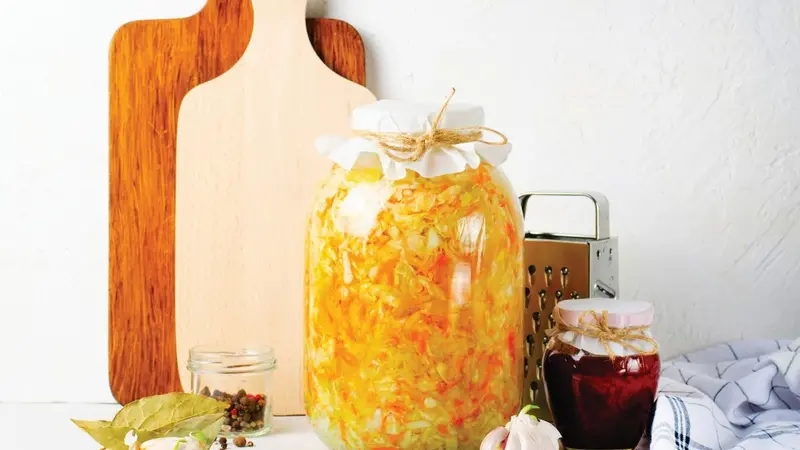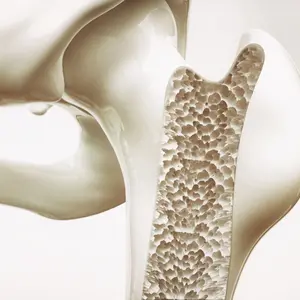
Conscious Eating
Conscious Eating
Increasing Gut Health With Prebiotics: How To Feed the Good Microbes
A compromised gut can make us susceptible to a host of conditions, including depression, chronic disease and viruses such as COVID-19. To fortify us against such illnesses and generally strengthen the digestive tract, prebiotic foods like asparagus, dandelion greens, bananas, leeks and Jerusalem artichokes can be quite helpful.
“Prebiotics are like fertilizer for your gut garden, helping it flourish so your whole body can thrive,” explains Donna Schwenk, author of Cultured Food for Life. “When you consume prebiotics, they pass through the digestive system undigested and become fuel for the friendly bacteria in your colon. This process helps the ‘good guys’ thrive, increasing their numbers and supporting a healthy balance of gut flora.”
Feeding the Good Bacteria
A harmonious mixture of prebiotics and beneficial intestinal flora—known as synbiotics—can help ward off illnesses, lower “bad” cholesterol and reduce chronic gut inflammation, which is linked to the development of tumors and colorectal cancer. A review published last year in the journal Foods suggests that adding prebiotics to the diet could improve cognitive function, relieve symptoms associated with inflammatory bowel disease and osteoporosis, and even resolve gastrointestinal disorders that plague up to 70 percent of individuals on the autism spectrum.
Adding healthful prebiotics can be as simple as dropping a few raspberries, blueberries or strawberries into unsweetened yogurt or kefir. Dandelion greens, which are packed with inulin, can be tossed into salads, sautéd with a little garlic and olive oil, or added to smoothies. Leeks, which are mild and sweet, can be enjoyed in soups, sautés, quiches, miso broth or cream dips. Other delicious prebiotic ingredients include bananas, flax and chia seeds, cacao nibs, lentils, oats, barley, chicory and jicama root, almonds, seaweed and avocados.
Schwenk suggests an easy gourmet dish that features roasted asparagus, apples and Jerusalem artichokes over a bed of greens tossed with a probiotic-rich salad dressing. She notes, “Apples are rich in pectin, a soluble fiber and powerful prebiotic that ferments in the gut and feeds beneficial bacteria like Akkermansia muciniphila, which play a vital role in maintaining and strengthening the gut lining.”
Pros and Cons of Fermented Foods
According to Schwenk, refrigerated kimchi and naturally fermented sauerkraut are rich in Lactobacillus plantarum, a powerful probiotic that thrives during fermentation, breaking down sugars and promoting a healthy microbiome. Benefits include nutrient absorption, mood support and enhanced immune function.
Renee Barasch, a certified digestive specialist and owner of Digestive Health Solutions, concurs that these probiotic foods can aid in balancing blood sugar, insulin resistance and digestive woes like constipation, diarrhea, bloating, heartburn, acid reflux and gas. On the other hand, she cautions that fermented ingredients can be too high in histamine and thus cause uncomfortable digestive issues for some people.
“Folks need to keep in mind their unique gut microbiome,” says Barasch. “Some people will feel gassier or bloated from some of these foods, depending upon their gut health. I use the BiomeFx stool test to identify the presence of histamine, estrogen, hydrogen sulfide and other things that could cause gut issues.”
How To Introduce Prebiotics
Findings published in the Journal of Advanced Research in 2020 suggest that certain types of gut flora could play a role in the development of inflammatory bowel diseases. Prebiotics like garlic can become antagonists for those that have an overabundance of certain types of intestinal microbiota. Garlic can also lead to high concentrations of hydrogen sulfide, which can contribute to gut inflammation.
Schwenk advises, “Introducing prebiotic foods gradually is important to avoid stomach discomfort, especially if you’re new to them. Prebiotics feed your gut bacteria, which can produce gas as they ferment the fibers, so a slow and steady approach is best.”
She recommends eating prebiotics together with probiotics like yogurt, kefir or kimchi so the gut can handle the increase in fiber more effectively. Begin with one or two tablespoons per meal to slowly introduce the beneficial bacteria into the system. “Kimchi and kraut are versatile,” Schwenk remarks. “You can enjoy them as a side dish, mix them into fried rice or even stir them into soups after cooking to preserve the live probiotics.”
Marlaina Donato is an author, artist and composer. Connect at WildflowersAndWoodSmoke.com
Related Recipes:
Blueberry Blast Smoothie
Bright, creamy and bursting with antioxidants, this tangy kefir smoothie blends banana, blueberries and coconut milk for a refreshing sip that supports digestion and urinary health. Read More »
Kefir Kraut Dip
Creamy, zesty and teeming with probiotics, this simple dip pairs tangy sauerkraut with luscious kefir cheese—perfect with crisp veggies or whole-grain chips at your next gathering. Read More »
Apple Kefir Salad Dressing
This silky kefir-based dressing combines the sweet-tart notes of apple and vinegar with probiotic power—an easy way to upgrade any salad with tang, depth and gut-friendly benefits. Read More »
Blender Salsa
Bold and smoky with a hint of heat, this fermented salsa delivers a punch of flavor plus gut-boosting benefits, thanks to live cultures and prebiotic-rich ingredients like garlic and onion. Read More »
Original article published at Natural Awakenings National


 By
By










